L.A.’s forgotten Greene & Greene, for sale
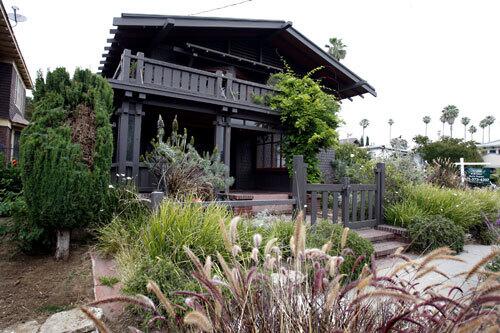
What’s thought to be the only remaining house in
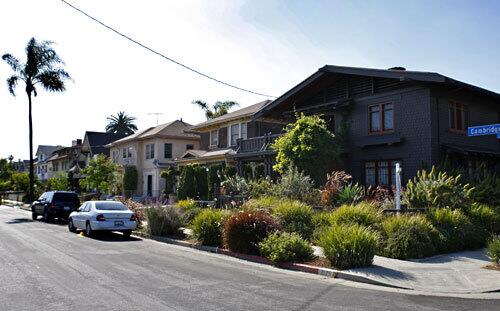
By comparison, the much larger Greene & Greene-designed Spinks House in
The 2,620-square-foot house, designed in 1905 and expanded in 1917, sits on Cambridge Street in the area of West Adams known as Harvard Heights. It is on the market because its owner, Martin Eli Weil, a restoration architect and founding member of the
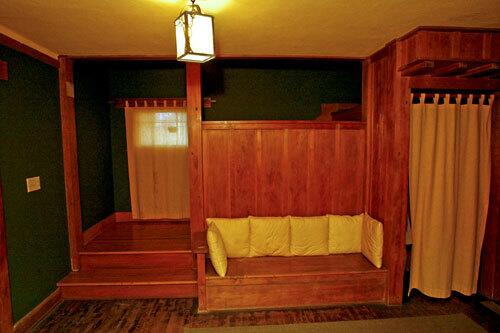
The front hall. The brown redwood-shingled house with orange trim has three or four bedrooms, depending on whether a downstairs room becomes a kitchen or a bedroom. The yard is full of lavender, rosemary and roses, but the Greene & Greene influence is perhaps most evident inside: the wooden curtain rods, the built-in benches, the cutouts in a cedar wall of the foyer. Throughout, the ceilings have been restored to their original golden yellow. Downstairs, the walls have been painted forest, pea soup or olive green, the colors the Greenes chose.
The Lucy Wheeler House “is a great opportunity for a person who doesn’t have the means” to buy a
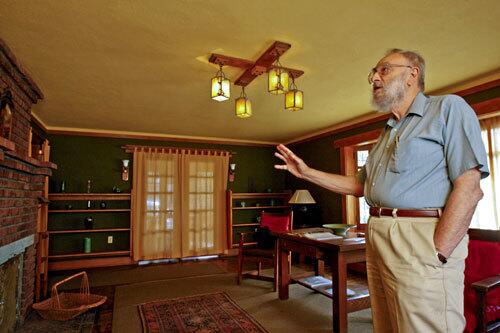
Previous owner Weil — who worked on the restorations of the
Advertisement
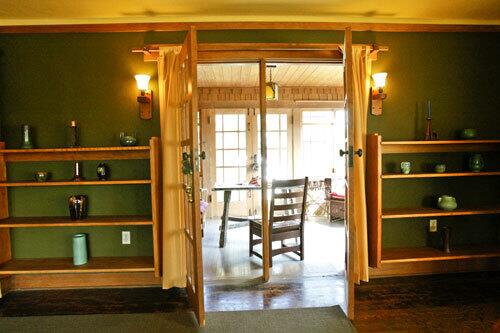
The bookcases built in at one end of the living room, the sort of detail for which the Greenes are known, had disappeared, so new ones were constructed, copying the old. An expert in color, Weil removed layers of wallpaper and paint, using a microscope to determine the exact color that would have been put on the walls a century ago.
As Weil worked, it became clear that the interior of the house was among the best examples of a phase in which the brothers used bold colors, Makinson said. “Martin uncovered in that process colors that were unusual for Greene & Greene. As they moved forward, they muted their colors.” (Anne Cusack / Los Angeles Times)
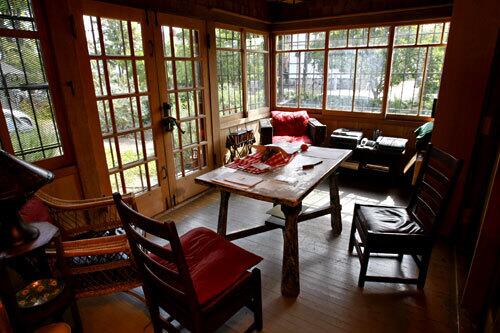
The exterior of the house is protected by Historic Preservation Overlay Zone restrictions, and by an “exceptionally detailed” historical conservation easement, which protects the interior as well — one of 27 such agreements with the L.A. Conservancy, said Mike Buhler, the organization’s director of advocacy. The idea was to find a middle ground between protecting the house and allowing the buyers to have a life in it, Raposa said.
Although the colors in the entry and dining and living room can’t be changed, the new owners may choose the upstairs colors. (The original hues have been documented, however, should the buyer choose to be that committed to history.) (Anne Cusack / Los Angeles Times)
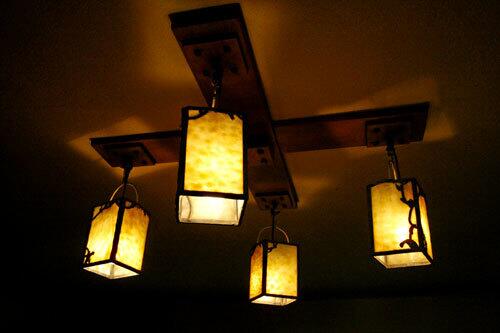
“Almost miraculously,” the original Greene & Greene golden-colored glass lantern light fixtures in the dining room, here, and living room survived, Raposa said. (Anne Cusack / Los Angeles Times)

Because of the home’s historical status, the original sink cannot be replaced. The old kitchen seems rustic enough to suit an old ski cabin. Raposa said the new owners may add a modern kitchen in an adjacent area that’s part of the 1917 addition. (Anne Cusack / Los Angeles Times)
Advertisement
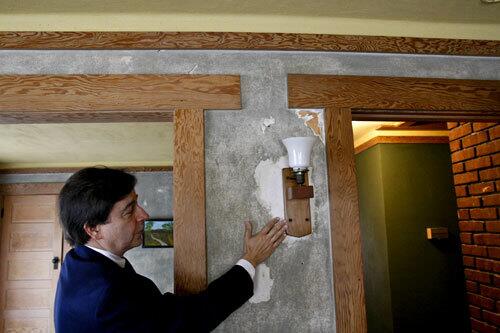
Raposa shows a replica fixture on the second floor. Walls have been left bare, and whoever buys the house can choose his or her own colors, though the original hues have been documented.
The house was among the first in the neighborhood, which became home to middle- and upper-middle-class families moving to the edge of the city. Just blocks away were larger, more fashionable homes owned by wealthier people, Raposa said. Wheeler hired the Greenes to build a house for her, her sister and her mother. She was one of the first public stenographers in L.A. and one of the state’s first female notaries, according to the book by John Steven McGroarty, “
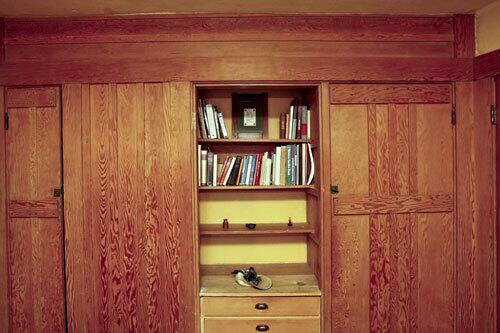
A second-floor bedroom closet is missing one door. (Anne Cusack / Los Angeles Times)
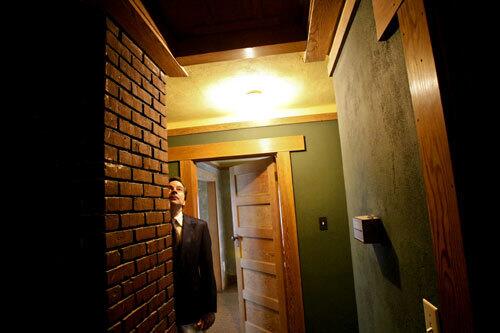
Raposa pauses on the second floor. Greene & Greene built other homes in
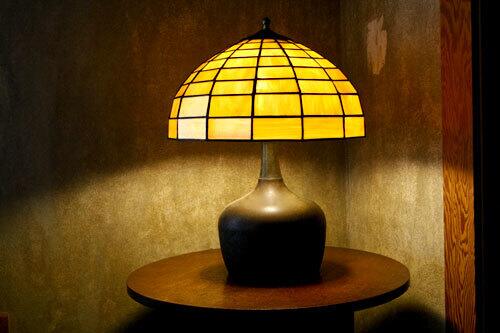
Martin Weil had this lampshade made before he died. His house is historic, but the neighborhood isn’t necessarily the most attractive to some prospective buyers. It lacks a commercial center with the cafes and shops that can be a beacon to prosperous urban residents. Raposa cites cafes at the edges of the area. And there is a new Wellington Square farmers market, a West Adams mothers club, regular house tours and holiday parties. “Change happens slowly,” Raposa said. (Anne Cusack / Los Angeles Times)
Advertisement
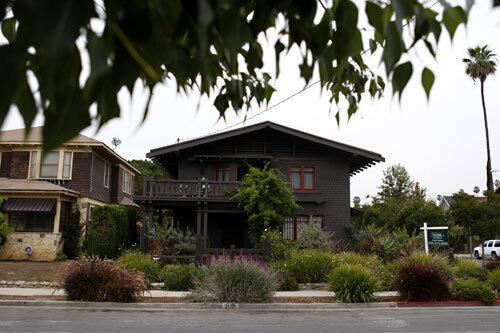
Change has come house by house, some meticulously cared for, others covered in stucco and fronted by cinderblock walls or chain link fencing.
Weil’s house has iron bars on the windows. Raposa said Weil wanted to take them down and that other residents have done so, some replacing them with screens equipped with alarms. Across the street is a house whose promise is obscured by broken windows and peeling paint. But in another direction, there’s a beautiful hefty Mission Revival house.
Maggie Navarro, a real estate agent who handles historic homes, said the buyers who would like to live in such homes often cannot afford them. A low price may make the purchase possible, she said, but restrictions on historic properties sometimes make them “not relevant for the way we live today.” It’s a tough balance — a modern life that preserves the past. (Anne Cusack / Los Angeles Times)



